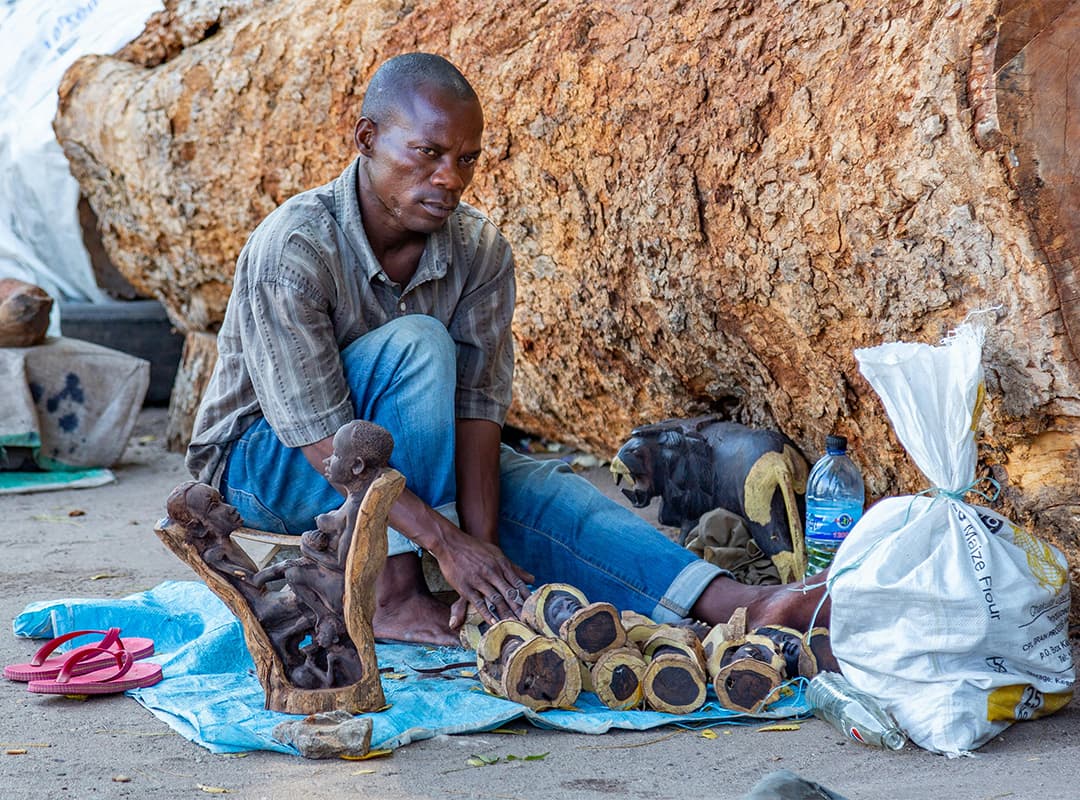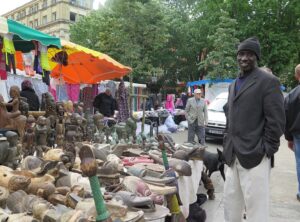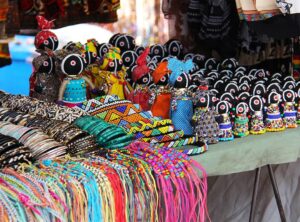True traditional African art is folk art. It reflects the character, traditions, and emotional and psychological characteristics of Africans. The aesthetic consciousness of most tribal African societies is characterized by the absence of the term “art” and the interchangeability of the concepts of beauty and goodness. A common feature is also syncretism, i.e. the aesthetic is not a specialized sphere, but an integral feature of all aspects of tribal culture. Through the mediation of the aesthetic, many social (religious, ideological, educational, etc.) functions are realized. Art is most closely connected with the material and spiritual needs of the community, it is dissolved in everyday life and is most clearly manifested in various rites and rituals. The merger of the utilitarian and the aesthetic is the essence of the traditional syncretic complex in general and for each of its individual elements in particular (visual, musical, dance, poetry).A special role is played by the symbolism of color: red most often means life, health, joy; white often symbolizes death, but also purity.
Various geometric signs, drawings, and ornamental compositions on the walls of dwellings, household items, and fabrics have magical (protective) and aesthetic (decorative) significance. A defining characteristic of the traditional religious consciousness of African peoples is the religious and mythological picture of the world. It takes on specific features in different ethnic groups, but it has in common the idea of the interaction of supernatural and natural forces, their mutual transformation.
The world of the supernatural includes the main deity who generates (or from whom the world arises), minor deities (spirits) of water, forests, land, and ancestors, whose souls act as intermediaries between deities and people; ancestors play a special role, because they combine the properties of two worlds – the natural and the supernatural: the dead are members of a certain community of people, beings of another dimension, belonging to which makes them capable of influencing the fate of living people. That is why ancestor worship plays a central role in traditional African religions.
Traditional beliefs are closely linked to rituals and initiations, which represent the ritual and symbolic side of African ethnic life. Different rites correspond to important events and stages of human life. Thanks to these rites, personal characteristics acquire social significance and are included in the orbit of social relations. These rituals accompany births, manhood, entering the age of marriage, marriage itself, childbirth, old age, and, ultimately, death of an African. A special role is played by the rites of initiation into secret unions, which are still preserved among many African peoples. The task of these unions is to guide all aspects of the life and activities of the members of the communities where they originated. The secret unions resolved issues of war and peace, carried out diplomatic missions, organized a kind of education system, supervised compliance with traditional morality, and performed the functions of judicial bodies, and practiced traditional religion. The main purpose of these unions was to raise useful members of the tribe.
The central figure in the ceremonies of secret unions was the mask. No ritual was performed without its participation. As a rule, each secret union has one main mask, a symbol of power and authority. This mask protected the community members from disaster and misfortune. When girls are initiated, this mask teaches them ritual dances, housekeeping, and everything else they need in life. In the Poro men’s secret union, a mask that imitates an animal’s head is called a gbel-la.
The mask was primarily used during initiation ceremonies and was kept in a ritual bush located in a place well hidden from view, on a kind of altar. The mask and all cult and ceremonial objects are regarded as shrines, as relics. A head mask could be seen only a few times in a lifetime.
Masks were made of a special kind of wood, painted in colors that corresponded to their character, and eventually restored or replaced. In addition to masks associated with initiation rites, there are also seer masks, masks of peace, war, justice, danger, luck, hunting, harvest, competition, fire, new year, singers’ masks, and others. The colors of the masks vary. For example, the Wobe craftsmen of the Ivory Coast use black, red, blue, green, and white. Black represents power and physical strength, while red represents power and strength. The seer mask helps to find out the truth. It can only be worn by healers and wise elders. The kuan mask is used in the fight against evil sorcerers, and only old people are allowed to see it. The war mask and its costume, made of raffia, are red. It is an image of spilled blood and a sign of readiness to shed the blood of enemies.


